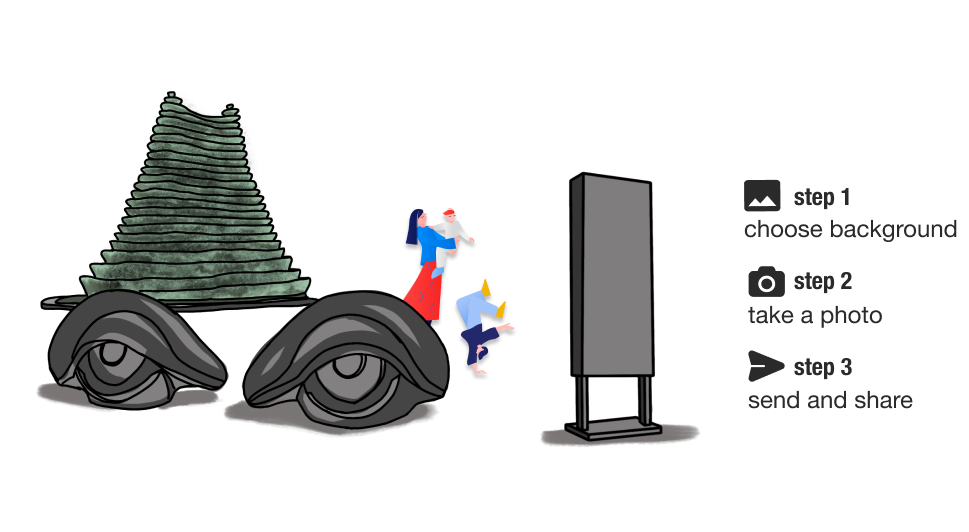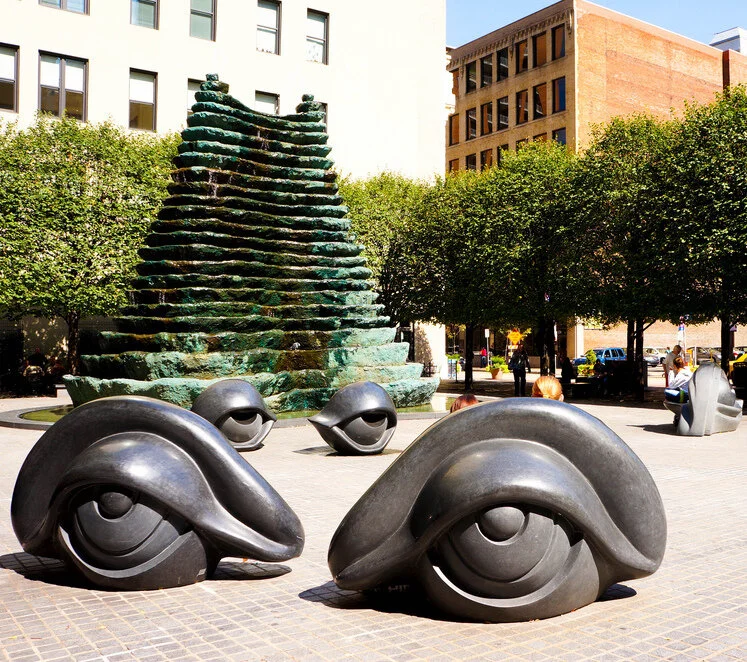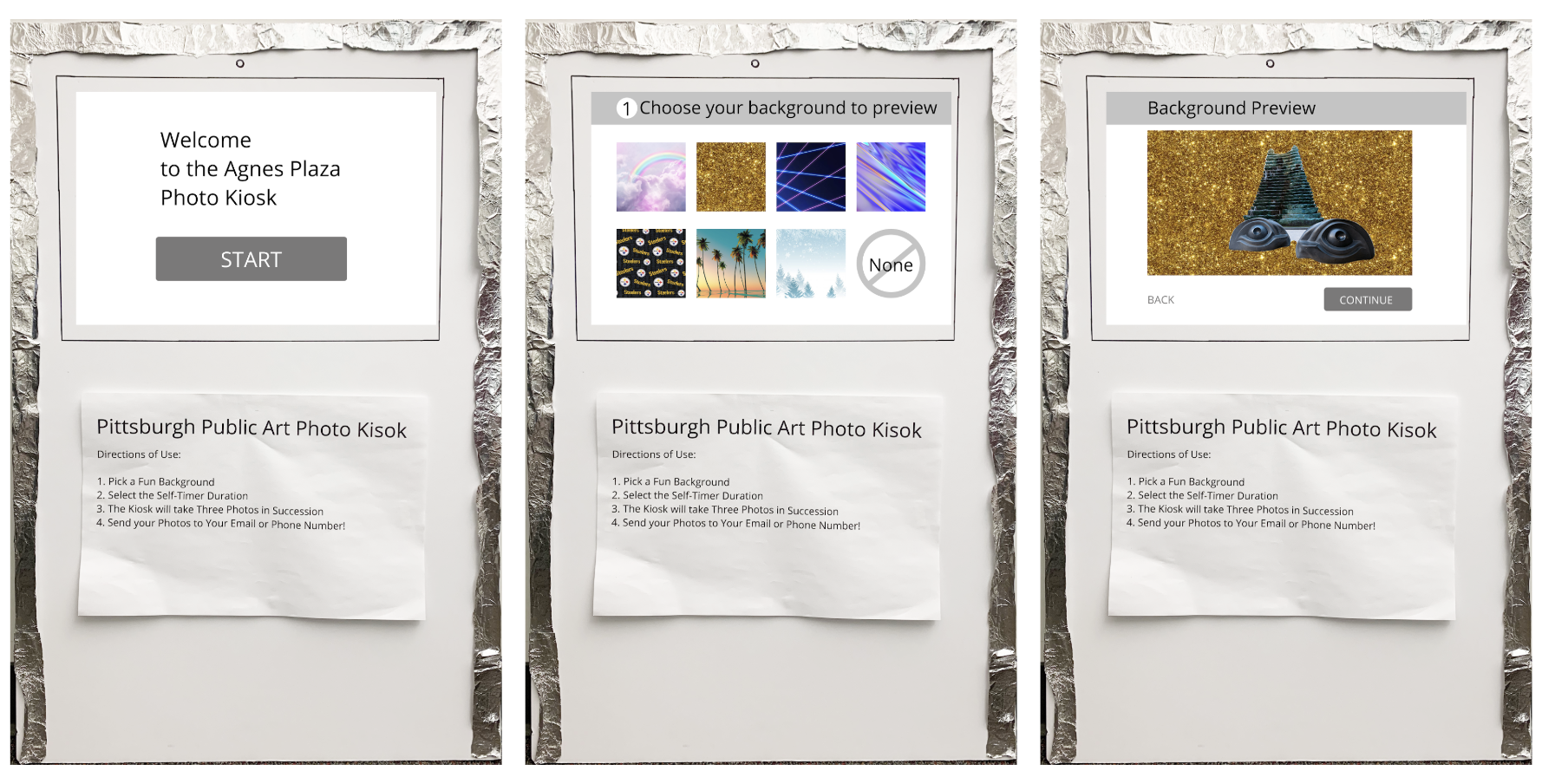The Public Art Selfie Kiosk
My Role
Research Lead
Artist
Team
Celine Chang
Erin Fuller
Stephanie Wang
Client/Context
Metro 21
Heinz College Arts-Management Program
User-Centered Research and Design
Timeline
12 weeks
Sep - Dec 2019
Overview
The Challenge
This project investigates how public art makes a city more livable and how technology can support the way that people engage with public art. My team and I found that in our current culture, what people decide to see, capture, and share is heavily dependent upon how “instagrammable” something is. With our solution, a photo kiosk at public art places, we leverage the need for shareable pictures by giving people the opportunity to take well-angled and fun pictures with friends/family/by themselves. The intent of the kiosk is to increase the share-ability of public art and thus attract more people to create meaningful relationships with the art and the city.
The Problem
How might we improve the livability of the city by strengthening art viewers’ bonds with their loved ones and their city through the sharing of public art?
The Solution
A photo kiosk located near Pittsburgh public art locations. Residents and visitors can take photos of themselves with the art pieces and send it to their personal devices to share with their families and friends.
The Process
Background Research & Reframing
What is the current state of the relationship between people and public art?
First, my teammates and I individually conducted background research on the problem space. We then came together to “Walk the Wall” and synthesized all the research we had collected. Through our synthesis, a common insight all 4 of us had noticed became clear: people create a bond with public art when they share photos of the art. We used a technique called abstraction laddering to reframe our problem, and found a new focus:
How might we improve the “experience sharing” of public art?
Observe & Intercept / Affinity Diagram
With whom and how do art viewers share their experience with public art?
To further understand why people share art, we went into the field to conduct observe and intercept interviews around public art like Agnes Plaza in downtown Pittsburgh. After a lengthy interpretation session where our team synthesized our notes, we printed all the notes out and began arranging them into an affinity diagram. We found that people not only care about how the art will come across on camera, but that the surrounding environment also plays an important factor on the share-ability of the art.
Think Aloud Protocol / Competitive Analysis
What is viewer’s current experience with sharing art on social media? What types of art do they choose to share and why?
We conducted five Think Aloud sessions at the Carnegie Art Museum to better understand local resident’s current experience with sharing art on social media via VSCO and another social media platform of their choice. We found that the intended shared audience played a big role in what platform users chose to use for sharing their chosen art pieces. We also saw that users did not want to cover or alter the art by adding filters or stickers to their photos of the art.
Storyboarding & Speed Dating
Do the user needs we discovered resonate with people?
Before beginning to ideate on a possible solution, our team walked the wall (again!) to re-examine our findings so far. Through this process, we found several needs that we could validate through storyboarding and speed dating. The highest ranked user need emerged: people need immersive and engaging experiences in capturing photos with public art.
Experience Prototyping
How do art viewers feel interacting with the kiosk? Did the kiosk improve share-ability of public art?
We decided to take elements of the top 3 favorite storyboards and combine them to create a new solution: a photo kiosk aimed at public art. People can select a fun background to place behind them and the art, take some photos, and send themselves the photos so that they can share them on social media or send them to their friends. We created a quick prototype with foam core, tin foil, and paper screens, and took it out to Agnes Katz Plaza for experience prototyping. Individuals had no issues interacting with the intuitive system, and mentioned that they would definitely use the kiosk -- even without the fun backgrounds.
Some sample screens we created for our quick and cheap experience prototype
The Findings
Connections, made through shared experiences, human-to-human and human-to-city, are highly valued.
There’s a mutual benefit which exists between people and public art. As public art acts as branding for the city, it can influence people’s view of the city.
The more aesthetically pleasing and immersive the art, the more likely people will be attracted to the art, but how people look within the context of the piece drives their willingness to share.
Even in a familiar environment, novelty or change, such as the presence of a kiosk, will attract attention.
Opportunities to capture memories strengthen the bonds between viewers and their city.
The Selfie Kiosk
With our solution, the Selfie Kiosk, people are able to take aesthetically pleasing photos with public art in their city in a fun and engaging way. People can then keep the photos from the kiosk, and further connect with the experience and create fond memories by sharing them with their loved ones. Moreover, the kiosk provides a mutual benefit to the city by allowing the city to quantify engagement through the data collected by the kiosk.
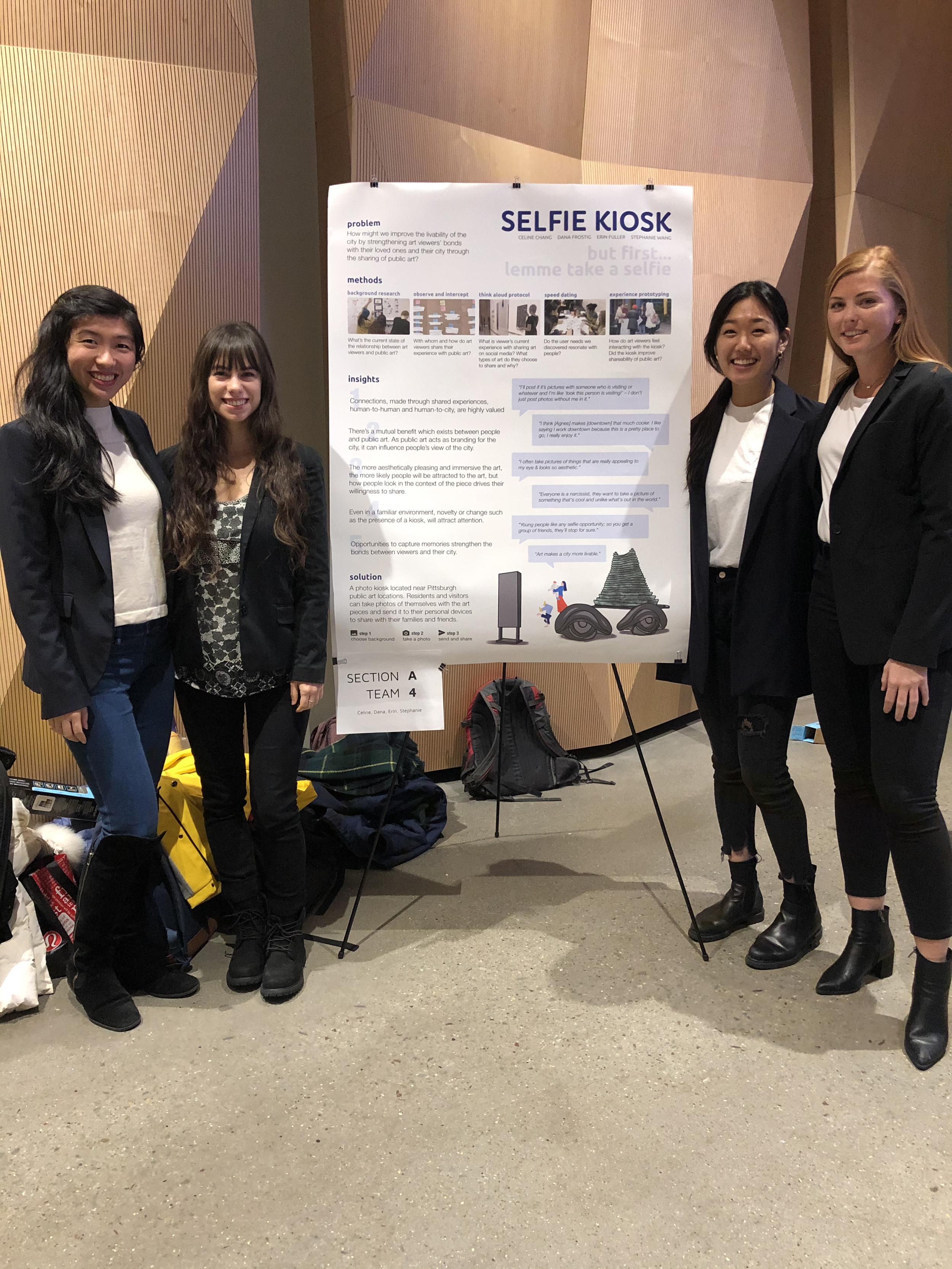
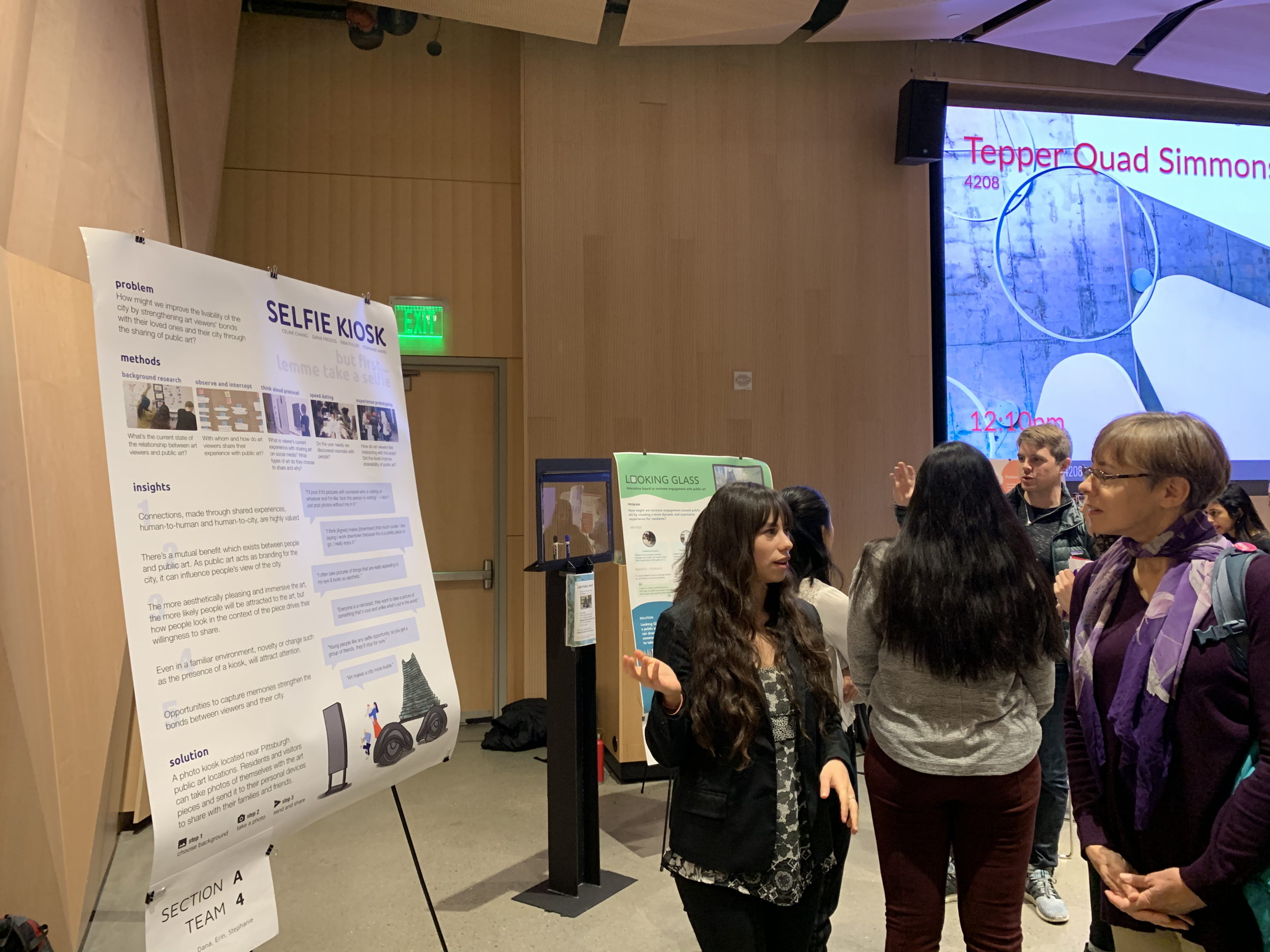
My Role
My most notable contributions:
Developing hypotheses which set the stage for our research objectives and strategy
Organizing and guiding synthesis sessions for collaborative insight discovery
Mentoring my teammates on constructing research guides and conducting user research sessions.
Rapid prototyping for the development of our final solution
